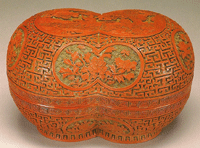CONSERVATION VS. RESTORATION
An art appraiser must understand how conservation and restoration affects the work of art’s market value in order to make a sensible judgment on the impact of damage on value.
• Conservation is defined as operations and techniques employed with the ultimate goal of extending of the life of cultural goods. It refers to the preventative measures taken to avert potential damage to the artwork. Conservation is not only about treatments, but also about the challenge of conserving the original intent of the artist.
• Restoration refers to an active intervention of the physicality of an artwork or fixing the damage. It is about replacement of the damaged area. Cesare Brandi defines restoration as “the mythological moment in which the work of art is recognized, in its physical being, and its dual aesthetic and historical nature, in view of its transmission to the future.”
CONDITION ASSESSMENT
The marketplace (private and public collectors and dealers) decides what treatment are acceptable and which are not. Buyers and sellers become suspicious about a work of art, depending on whether it has been conserved or not, or by whom and how. For historic and artistic works, cosmetic treatments are considered negative, while standard cleaning, deacidifying, buffering are considered perfectly okay. For photography, intensification of the negative with a chemical element to bring out the silver as much as possible is the kiss of death. For oil painting, lining canvases is considered as a high risk, since the surface many lose texture, and the layers of painting may be affected by external factors that come into play when lining with whichever adhesive. For Chinese scrolls, a replacement of mounting material, repairing the tears or wrinkles, or cleaning the stains are considered as an aesthetical restoration, however, remounting fragments into a full painting, entailing retouching the damaged pictorial details, would dent the commercial value of the restored piece, no matter how skilled the restoration is.
CONDTION IMPACTS VALUE
Condition is not the only factor affecting the market value of a work of art. Other factors, such as subject matter, provenance, format, condition, date of painting, visual appeal, also influence value. However, condition’s impact on value depends on its inherent characteristics (materials, age, craftsmanship and quality), having greater or lesser impact on its market price. Superficial damage caused by time, atmosphere agents or accidents restored by a skilled professional will probably increase in value, because the piece will look prettier. For a collector, weighing the type of damage (location, significance, cause and consequences), the possible restoration of the damage (what kind of outcome is predictable when considering appropriate treatment) and the period of the piece and, as a result, what market it is destined for, is necessary.
Condition is extremely important in the appraisal of fine arts, although it is not the only factor that comes into play. Art appraisers will consider whether the outcome of restoration or conservation would be desirable and positive in economic terms, that is, if it would increase the value of that work of art or not. They usually center their attention on the location of damage, the scope of damage, and the methods of restoration, weighing whether the damage blocks the viewer’s understanding of the subject matter or not.

